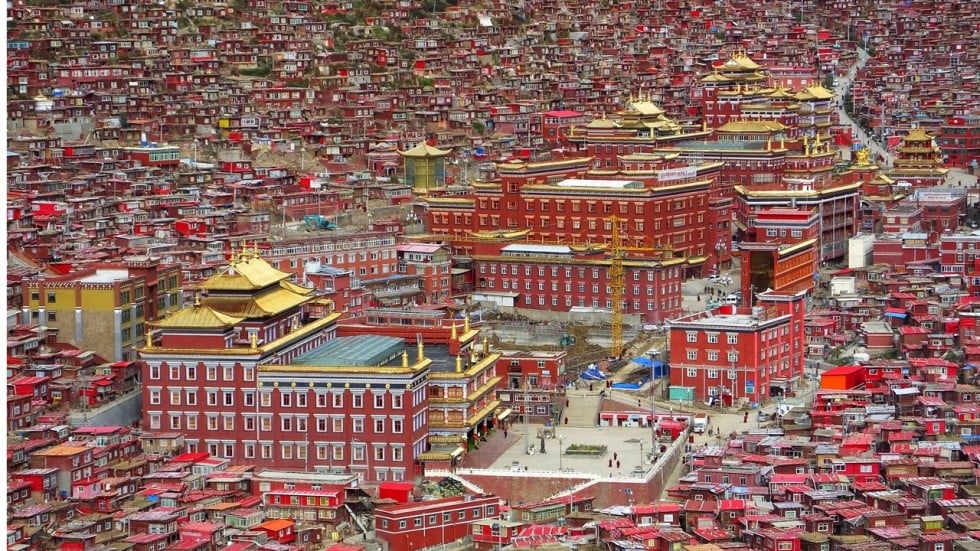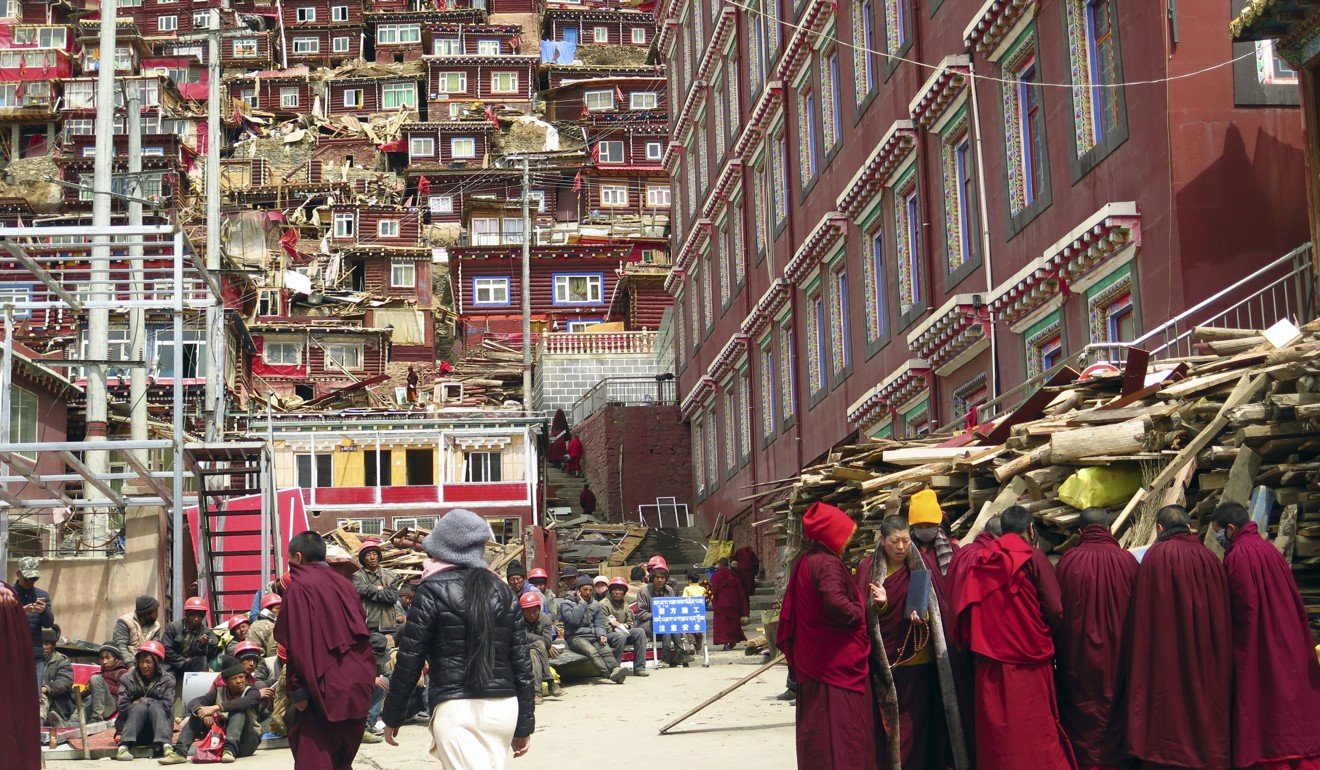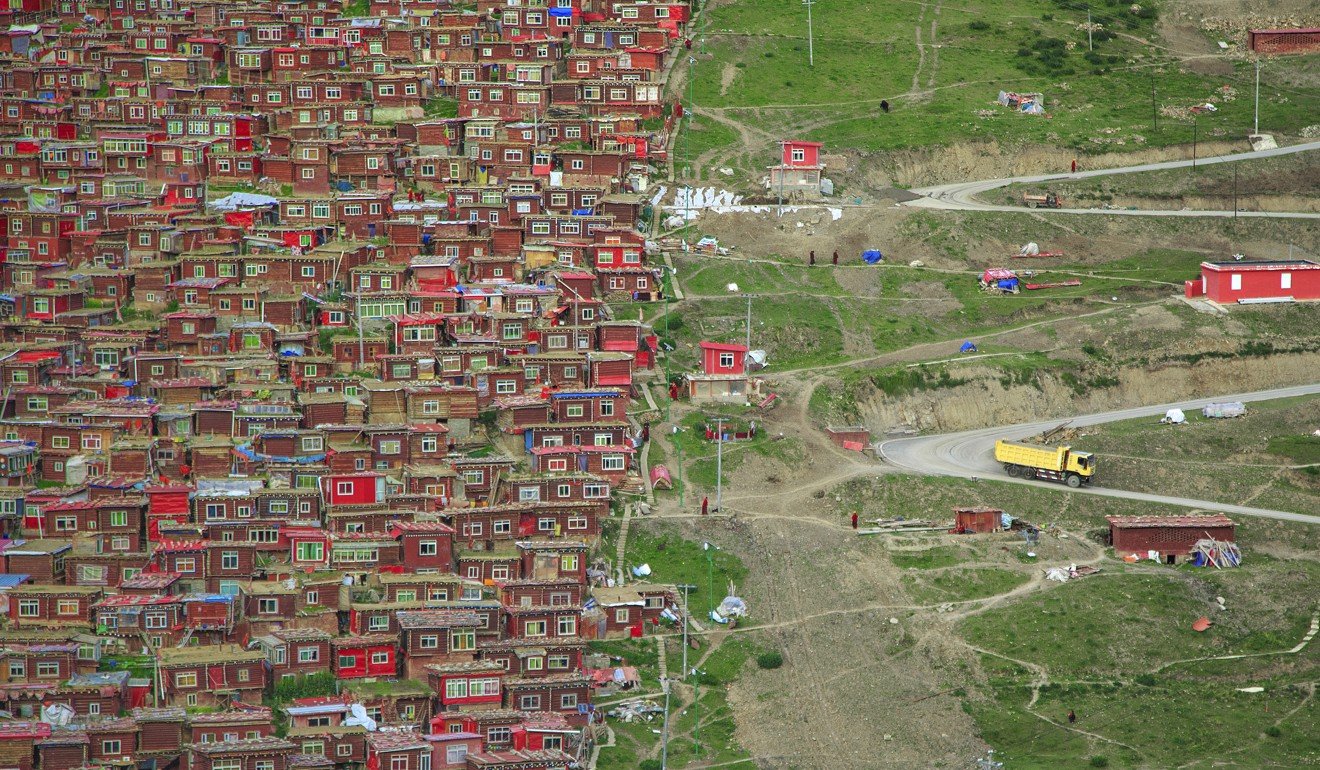Deputy police chief named to take over as head of a new party committee to run formerly independent religious academy
It was founded in 1980 by the late charismatic lama Jigme Phuntsok and has attracted tens of thousands of monks and nuns who have together built a sprawling network of red-painted homes on the valley’s hillsides.
Over the decades, Larung Gar has operated as an independent centre of learning and since Jigme Phuntsok’s death in 2004 has been administered in turns by a group of revered khenpos, or senior monks.
But today the academy is facing an existential threat – it will soon to be taken over by a Communist Party committee headed by a local police officer.
Observers say the move will allow the party to exert greater control and surveillance over the academy and is just the latest attempt by Beijing to get a tighter grip on religion.
News of the change became public on Monday when the party’s personnel arm in Garze, the Sichuan prefecture where Larung Gar is located, released a list of party cadres appointed to run the academy and monastery.
On paper, members of the public had until Friday to voice any opposition to the candidates, but the formality rarely leads to any real changes.
The appointee for the academy’s party secretary – its first in nearly four decades – is a deputy police chief of Garze. He will also act as its director, a position now held by Ani Mumtso, a respected lama and niece of Jigme Phuntsok.
Two cadres – one of them the head of the local religious affairs bureau – will become the academy’s deputy party secretaries and deputy directors. Three more local party officials will be the monastery’s party secretaries and management committee directors.
All six of the appointees are ethnic Tibetans but, as members of the atheist party, are non-believers in Buddhism.
Tsering Woeser, a Tibetan poet and writer living in Beijing, said she was shocked to learn that a party committee would be installed in the revered academy.
“Sending party secretaries to run a Tibetan Buddhist institute is just ridiculous,” she said. “The party does not regard Larung Gar as a Buddhist academy, but attempts to manage it as a unit of the state or party apparatus.”
The party’s organisation department in Garze, which made the announcement, refused to comment on the nominations. But state media tried to brush the appointments off as “common practice”.
State-run nationalist tabloid Global Times quoted Penpa Lhamo, from the Tibet Academy of Social Sciences, as saying that management of Buddhist schools had always been an important part of the local government’s responsibility, and appointing local officials to the schools was a common practice across China.
Tibetan Buddhist nuns take up feminism and seek equal status with monks
Woeser said other Tibetan Buddhist academies in China, such as one in Beijing and another in the Tibet autonomous region, were no strangers to party secretaries due to their close ties with the government.
But she said Larung Gar was very different – it was founded privately by Jigme Phuntsok and operated independently.
Two of the khenpos who administered the academy regularly visited campuses in Europe and the United States to spread their teachings and raise the academy’s profile.
Katia Buffetrille, a Tibet scholar at the École Pratique des Hautes Études in Paris, said the khenpos also had a broad following at home.
“The khenpos at the head of these monastic camps are highly learned and respected masters who have attracted thousands of lay practitioners and monastics, both Tibetans and [Han] Chinese. This growing influence and popularity … was clearly problematic for the Chinese authorities,” Buffetrille said.
“Obviously, the aim is to diminish the influence of Larung Gar.”
Buffetrille said the latest turn of events at Larung Gar also showed the authorities’ desire to transform it into a tourist destination, undermining its survival as a religious institution.
Woeser said many monasteries across the Tibetan area have been turned into tourist attractions and are managed by a committee stuffed with party cadres appointed by the government.
In June, Agence France-Presse reported that homes in Larung Gar were being razed to make way for tourism infrastructure, parking and better roads leading down the steep hills to the central monastic buildings.
Tears and hymns as crosses toppled in China’s Christian heartland
The hillside homes were torn down by the thousands, and legions of nuns and monks were forced out by the authorities.
Rights groups denounced the demolitions and expulsions as a crackdown on religious practices, but the government said the project was intended to “eliminate hidden dangers” in the dangerously overcrowded settlement.
Buffetrille said it was difficult to say what would become of Larung Gar because it depended on many factors.
The institute has been targeted before. In 2001, thousands of residents were forced out when their homes were demolished by the government. But that did not deter people from returning and the settlement from expanding.
“Nobody would have said in 2001 that Larung Gar was going to be reborn and even expand,” Buffetrille said.




